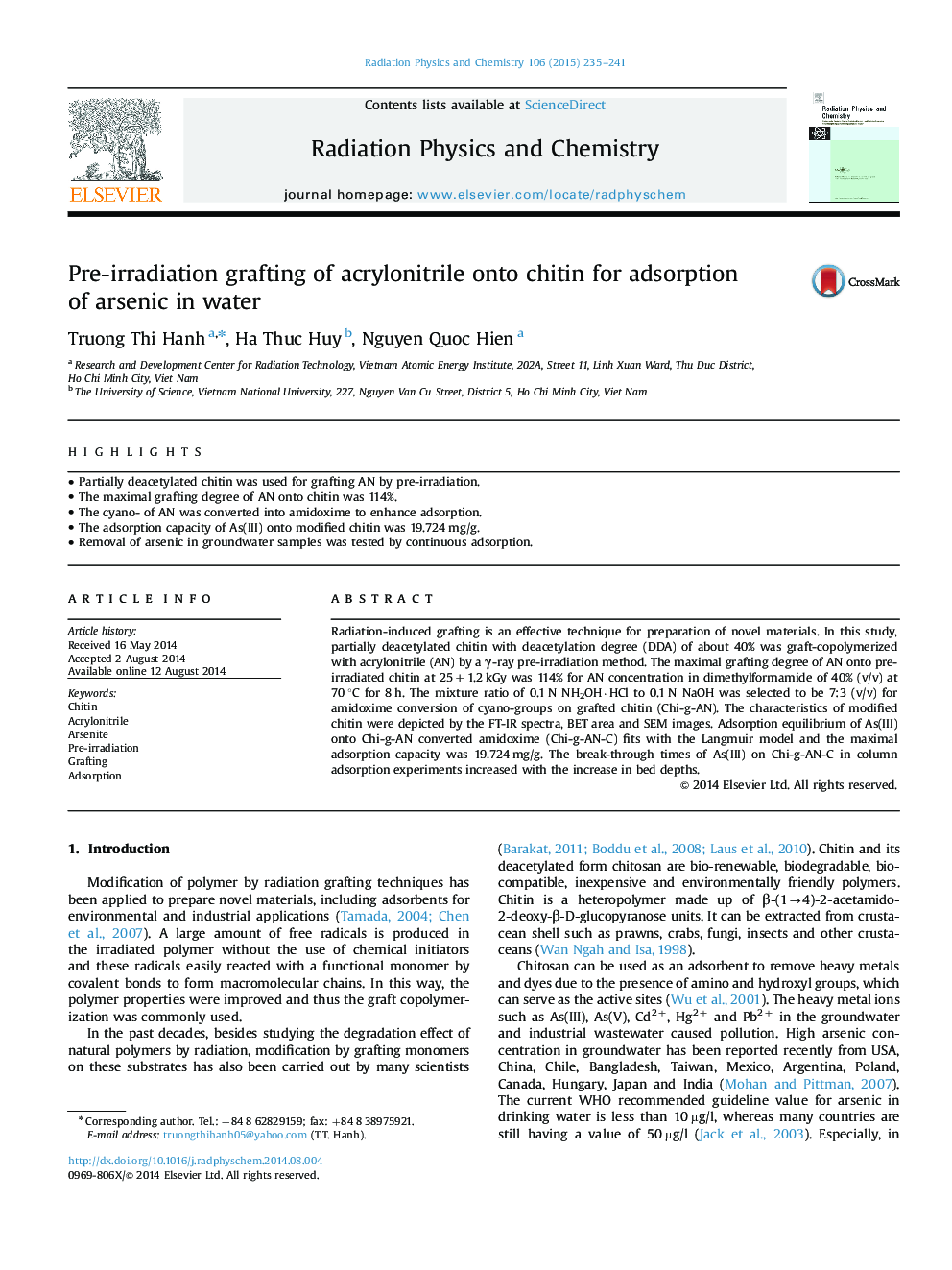| Article ID | Journal | Published Year | Pages | File Type |
|---|---|---|---|---|
| 1885995 | Radiation Physics and Chemistry | 2015 | 7 Pages |
•Partially deacetylated chitin was used for grafting AN by pre-irradiation.•The maximal grafting degree of AN onto chitin was 114%.•The cyano- of AN was converted into amidoxime to enhance adsorption.•The adsorption capacity of As(III) onto modified chitin was 19.724 mg/g.•Removal of arsenic in groundwater samples was tested by continuous adsorption.
Radiation-induced grafting is an effective technique for preparation of novel materials. In this study, partially deacetylated chitin with deacetylation degree (DDA) of about 40% was graft-copolymerized with acrylonitrile (AN) by a γ-ray pre-irradiation method. The maximal grafting degree of AN onto pre-irradiated chitin at 25±1.2 kGy was 114% for AN concentration in dimethylformamide of 40% (v/v) at 70 °C for 8 h. The mixture ratio of 0.1 N NH2OH·HCl to 0.1 N NaOH was selected to be 7:3 (v/v) for amidoxime conversion of cyano-groups on grafted chitin (Chi-g-AN). The characteristics of modified chitin were depicted by the FT-IR spectra, BET area and SEM images. Adsorption equilibrium of As(III) onto Chi-g-AN converted amidoxime (Chi-g-AN-C) fits with the Langmuir model and the maximal adsorption capacity was 19.724 mg/g. The break-through times of As(III) on Chi-g-AN-C in column adsorption experiments increased with the increase in bed depths.
